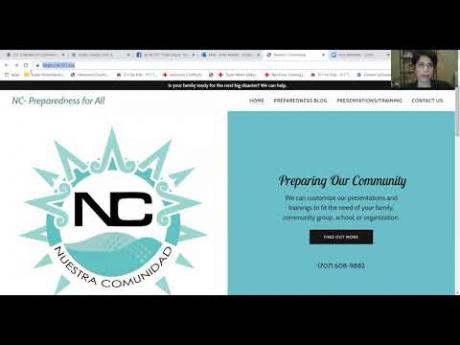Vulnerable Populations and Emergency Response: Lessons from COVID-19 Counties Can Use Right Now to Prepare for the Next Crisis
Alma Bowen could write the book about communicating to diverse communities during emergencies and natural disasters. A 9-1-1 operator in Sonoma County for more than 17 years, she channeled her experiences during the North Bay fires in 2017 into a non-profit called Nuestra Comunidad. Reflecting on her experiences over several years, Bowen shares how having a trusted community partner has helped the Sonoma County region forge inroads with its non-English speaking community, and recommends tips other counties can use.
Forged from Fire
Emergency response is a two way street—the first responders need to share information in accessible ways, and the recipient communities need to know how to act on those messages. Following the North Bay fires, Bowen established Nuestra Comunidad to work on both ends of the equation— providing culturally relevant and appropriately translated materials for first responders and local governments to share out, and local community trainings with the Spanish-speaking community to build trust and educate vulnerable populations on how to access services and engage with first responders during emergency situations.
Kincade and PSPS
This outreach paid dividends during the Public Safety Power Shut Offs and Kincade Fire in 2019. Nuestra Comunidad worked within the community to raise awareness about the new phenomenon of power shutoffs and their importance. During the Kincade fire, Bowen went directly to the shelters to build trust with the Spanish-speaking community so families in need would feel safe utilizing the shelters and services. Having a familiar face providing information in the most commonly spoken dialect resonated with the local residents who had concerns beyond the spreading wildfire.
COVID-19
As we all know very well, emergencies aren’t limited to wildfires. Early on in the COVID-19 response, the Rebuild NorthBay Foundation reached out to Nuestra Comunidad with funding to produce Spanish-language Public Service Announcements and printed materials. So many of the materials being developed and shared in the community were in English only, there was not a lot accessible to non-English speakers or those with limited reading ability. Nuestra Comunidad recorded its first COVID-19 video the very night that Sonoma County’s Shelter in Place order when into effect.
Thanks to the partnership with Rebuild North Bay, Bowen produced a video every day for a month on relevant topics. Videos included updates on the order, the local community/county response and even granular messages of what “shelter in place” meant. Another video utilized PowerPoint and visuals to facilitate communication with individuals with low literacy levels. Materials were distributed through Rebuild NorthBay, Nuestra Comunidad and partner organizations.
As the pandemic progressed, Sonoma County utilized Bowen’s services to enhance its emergency communications with Spanish language materials. The Board of Supervisors recognized the value of providing timely, accurate information that’s delivered in a culturally competent way. Nuestra Comunidad facilitated this process by recommending a Spanish language URL, distributing materials through trusted channels and a translating all information in a uniform dialect.
“The time to repair the roof is when the sun is shining.” John F. Kennedy
Fire season is approaching even as counties cope with the multiple impacts of COVID-19. Bowen recommends that counties build cultural competencies into their emergency plans now. The following tips will help counties improve outreach to vulnerable populations during future emergencies.
What Local Governments Can to Do Now
- Identify the most widely spoken language(s) and dialects in your county and identify services that can help. Establish a relationship and contract for language services, or invest in formal interpreting and translating training for bilingual staff members, before the emergency happens.
- Build communications outreach for non-native English speakers into emergency plans. Establish native language URLs for emergency websites that can be “turned on” instantly in an emergency. Provide basic FAQs to share with 2-1-1 operators and emergency dispatch workers.
- Identify the communications channels and trusted community partners to share emergency information. Outlets and partners will be different in non-English speaking communities. Consider radio programs, community groups, faith communities and local stores. Establish any necessary contracts or memorandums of understanding with community partners before these relationships are actually needed. Include community partners in relevant meetings and planning sessions, so that they are both aware of the plan and understand their role, prior to an actual disaster or emergency.
Taking these steps ahead of time will establish relationships and trust between government employees and the communities and organizations most adept at reaching vulnerable populations. CSAC is a proud supporter of Alma Bowen and Nuestra Comunidad. We thank her for sharing her expertise and insights to help counties and communities better prepare for and respond to emergencies, and are honored to support her mission of serving vulnerable county residents.












































